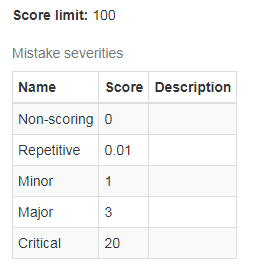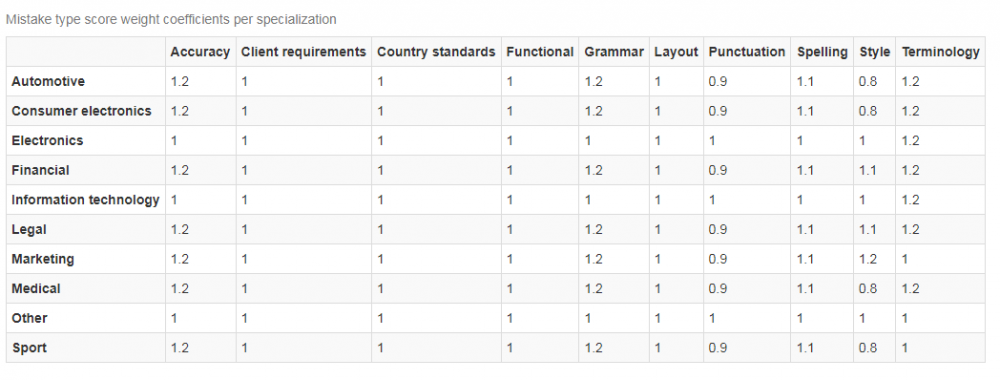Difference between revisions of "Quality score formula"
From TQAuditor Wiki
(→Quality score calculation examples) |
(→Quality score calculation examples) |
||
| Line 27: | Line 27: | ||
[[File:QS.png|border|300px]] | [[File:QS.png|border|300px]] | ||
| − | [[File:QS1.png|border| | + | [[File:QS1.png|border|1000px]] |
===Automatic word count=== | ===Automatic word count=== | ||
Revision as of 10:10, 28 January 2022
Contents
Quality score formula visualisation and interpretation
- 1. Account score limit
- The highest possible score (100 by default). Can be set on this page: [Evaluation settings]
- 2. Mistake severity score
- Score of mistake by its severity (for example, 1 point for minor and 5 points for major mistakes). Can be set on this page: [Mistake severities list]
- 3. Mistake type weight
- Weight of a specific mistake type by specialization. Can be adjusted on this page [Mistake types list]
- 4. SUM
- A sum of products of #2 and #3 for all the mistakes.
- 5. Project evaluation word count
- Automatic word count: The value from the "Total source words" field. Please see the Automatic vs. manual word count page.
- Manual word count: The value from the "Evaluated source words" field (specified when starting the evaluation with a manual word count).
- 6. 1000
- In the end, the result is always converted to 1000, a most optimal value.
The mistake severity scores, mistake type weights, and reports are based on this 1000-word amount. For example, a critical mistake with score of 20 with weight coefficient of 1 reduces the quality score by 20 per 1000 words (by 10 per 2000 words, accordingly, and so on).
For more information, please check the Quality score formula:Details and versions page.
Quality score calculation examples
In the examples below, the following quality standard is used:


